“How many red cars can you spot?”—a question many restless kids have heard from parents trying to keep them entertained on long journeys. It’s a simple game with no real prize, yet it’s etched into childhood memories. You stare out the window, waiting to shout “There’s one!” before your sibling spots a white one. It’s lighthearted rivalry, designed to bring a moment of peace to weary parents.
Now, imagine you’re sitting on a bench in Buenos Aires with an equally fidgety child. The car-spotting game has worn thin. But here, in the football-mad capital of Argentina, there’s another thing to count—Messi or Maradona. These two legends are everywhere—names printed on the backs of replica shirts, towering over the streets on large advertising hoardings, and splashed across countless murals decorating the outer walls of buildings, from bakeries to schools.
This is Argentina’s unofficial national game: Messi vs Maradona—but this time, not on the pitch. On the walls.
The question is: who’s winning the mural battle?
The Murals: A Reflection of Legacy
Across Argentina—from the buzzing avenues of Buenos Aires to quieter towns—murals of Maradona and Messi dominate the urban canvas. But these aren’t just portraits. They’re public statements. They reflect two different personalities, two different legacies—and a nation’s passion for football.
Maradona’s Murals
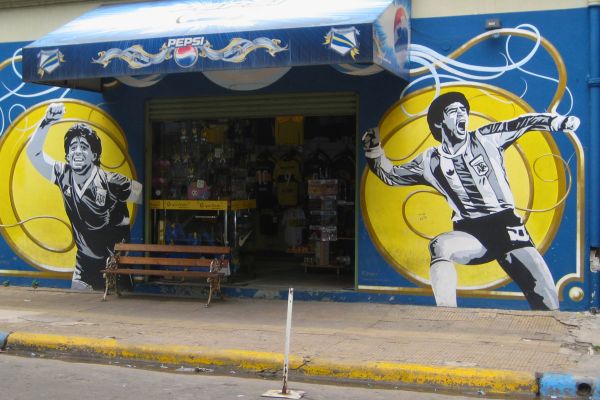
Since the 1980s, Diego Maradona has been immortalized in street art across the country. His murals are often painted with religious symbolism—halos, angel wings, or saint-like poses—evoking moments like the infamous Hand of God goal and the 1986 World Cup win.
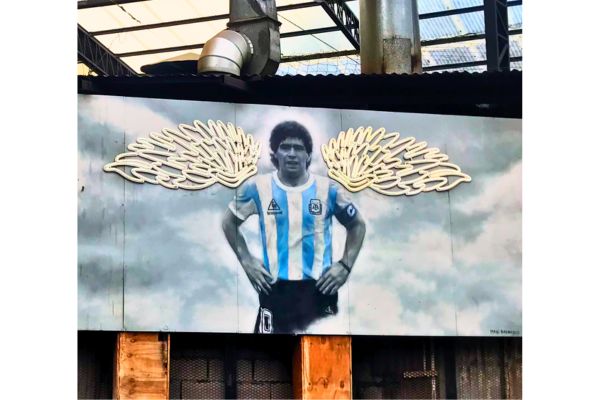
But Maradona’s presence goes far beyond football. His face appears on bottles of wine, soft drinks, deodorants—you name it. He’s woven into Argentina’s everyday culture.
Some murals go beyond reverence. They capture a playful Maradona—smiling, laughing, even dancing. These reflect the people’s love not just for the footballer, but for the man who was never afraid to be himself, flaws and all.
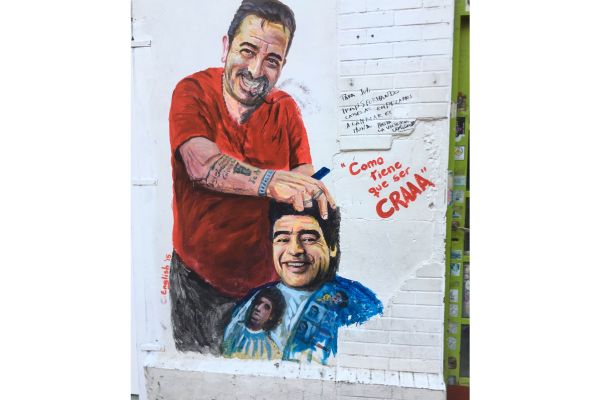
Messi’s Murals
For years, Lionel Messi’s murals felt incomplete—images of a global superstar still waiting for that final piece of glory with Argentina. But after the 2022 World Cup, that changed.
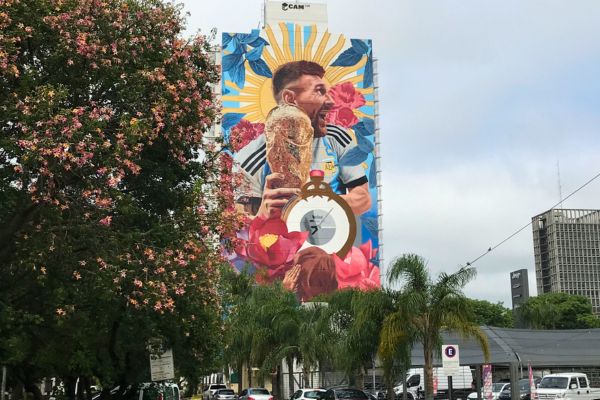
New murals celebrate not just the win, but the journey. Messi lifting the trophy. Messi with tears of joy. Messi, finally fulfilled. These murals are typically more modern in style, echoing his clean-cut image and international appeal.
Unlike Maradona, Messi isn’t found on wine bottles or household items (yet). But his image is still everywhere—especially on the backs of young fans wearing Argentina or Inter Miami shirts. His legacy is still being painted—literally.
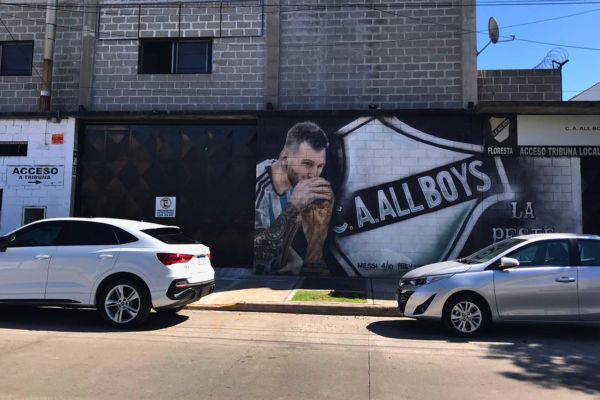
Statues and Symbolism
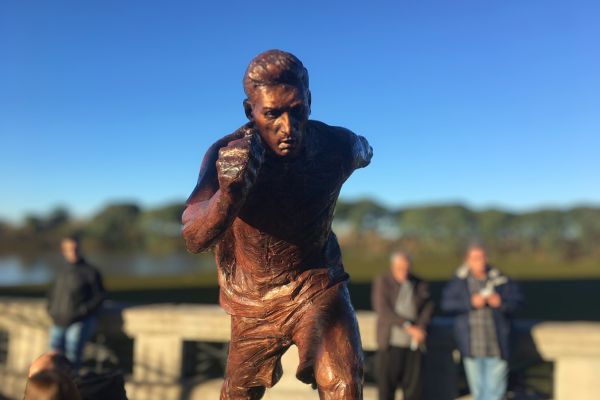
In 2016, a statue of Messi was unveiled in Buenos Aires on the Paseo de la Gloria. It was meant to be a lasting tribute to his career. Instead, it became a magnet for vandalism. The statue was repeatedly damaged, and eventually stolen—leaving only a pair of bronze boots and the broken base behind.
You can read the full story in our post: Why Lionel Messi’s Statue Was Removed in Buenos Aires.
In contrast, Maradona’s statues remain untouched. One stands proudly outside the Boca Juniors Museum at La Bombonera Stadium.
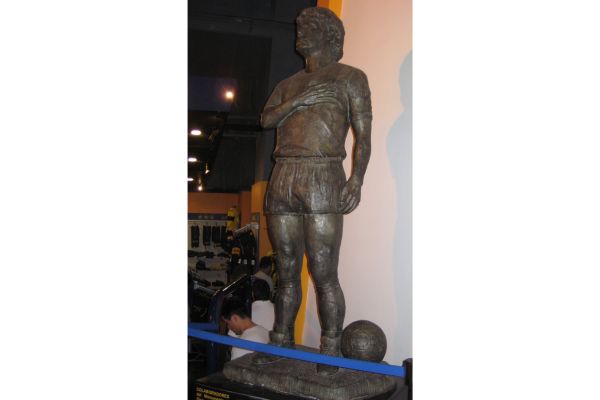
Another lives on in Naples. Yet another, surprisingly, in India. His mythic status seems to protect these tributes from harm.
If you’re in Buenos Aires, you can also visit La Casa de D10s—the home where Maradona once lived, now a museum offering an intimate look into his extraordinary life.
Who’s Winning Argentina's Street Art Battle?
Like the red car–white car game, it’s hard to call a winner. There’s always another mural around the corner.
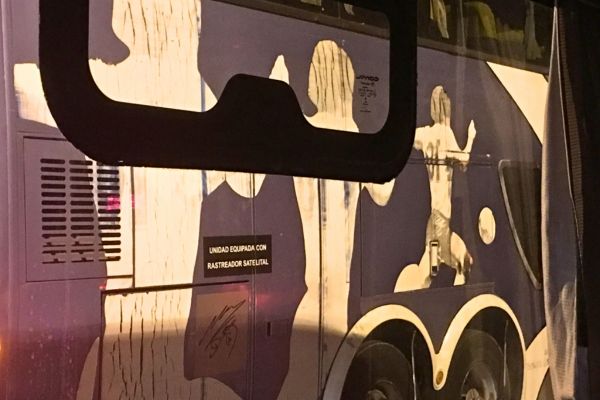
Maradona murals dominate older, working-class neighborhoods. They’re painted with raw emotion and deep respect. For those who lived through the glory of 1986, he remains untouchable—a symbol of rebellion, joy, and national pride.
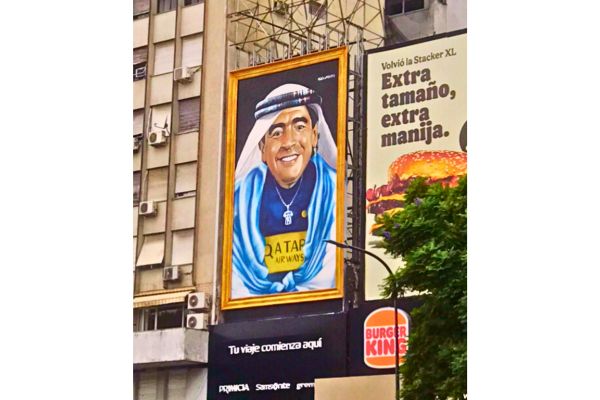
Messi’s murals, on the other hand, are multiplying—fast. Especially after the 2022 World Cup, walls in upscale barrios and international cities began filling with his image. He’s the face of a new era—modern, global, and quietly iconic.
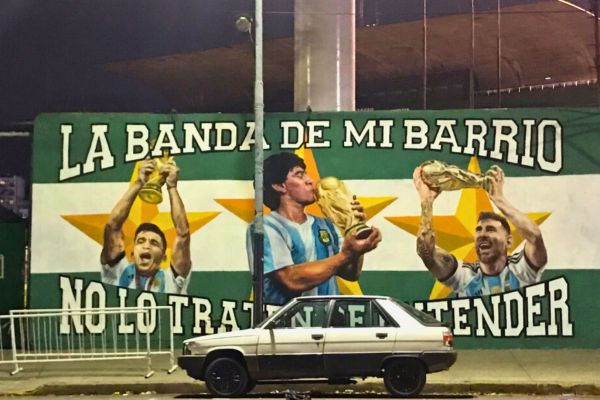
So who’s winning?
Maybe no one. Or maybe both.
Because as long as there’s paint, there will be street art creating creative murals. And as long as there are murals, Argentina’s love affair with these two legends will keep growing—one wall at a time.
